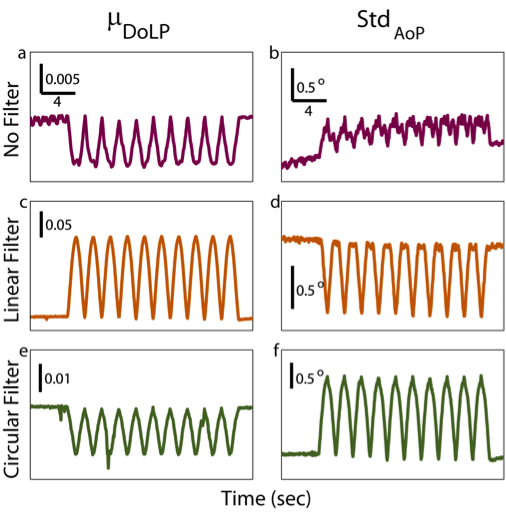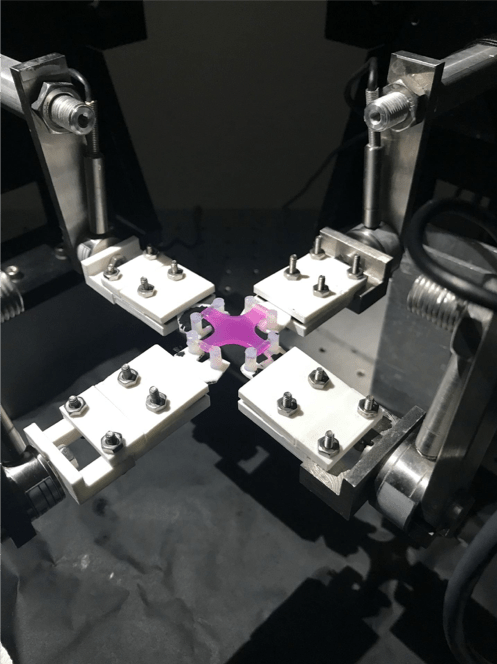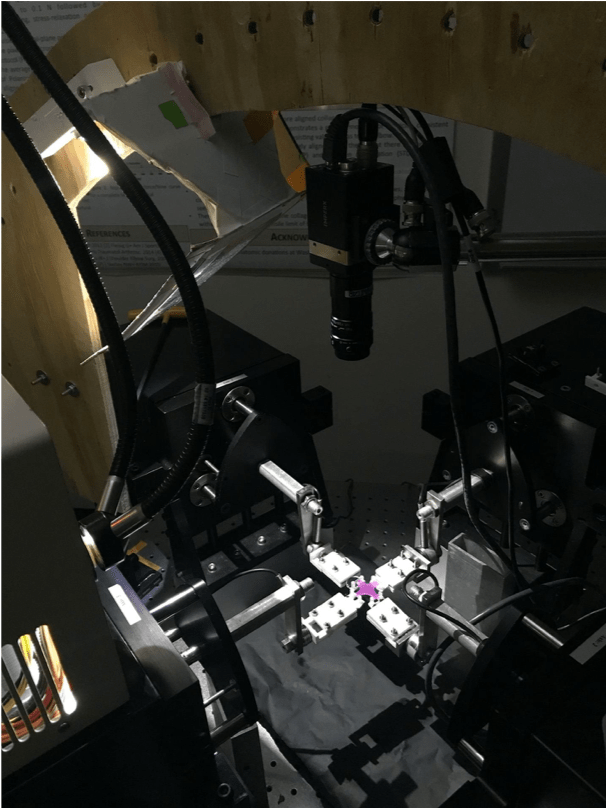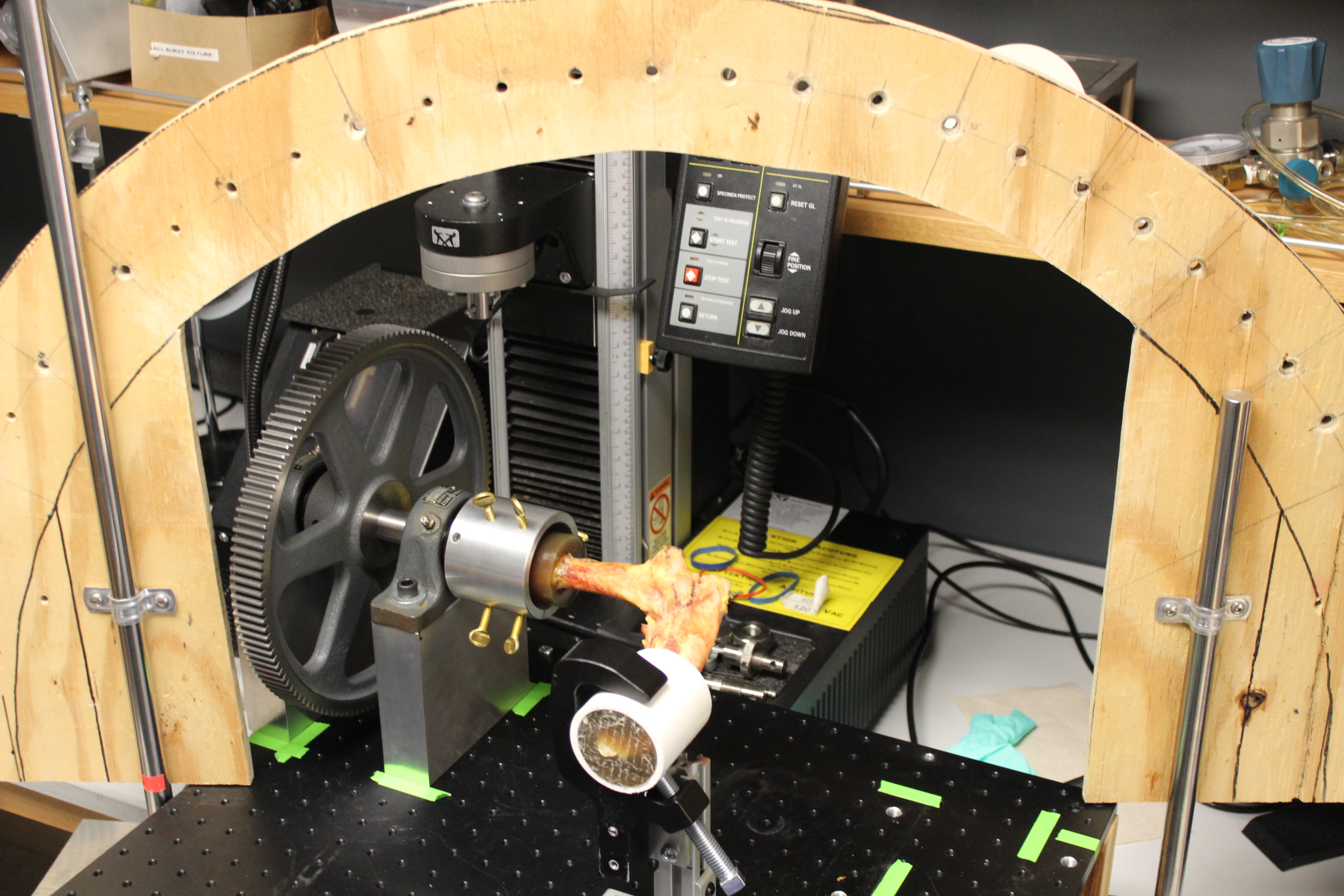Transmitted QPLI, as our lab has used extensively in the past, is capable of real time imaging of collagen alignment with adequate temporal and spatial resolution to quantify dynamic structure-function relationships. However, since this QPLI mode is transmission-based, it requires excision and thinning of tissues to allow for light penetration, thereby limiting physiological relevance. By modifying the technique to be reflected light based (rQPLI: reflectance quantitative polarized light imaging), we intend to enable a similar analysis with in situ tissues under more complex loading regimes and environmental conditions. rQPLI can enable nuanced, real time analysis of collagen fiber architecture in scenarios where information about the ECM response is currently not well understood: prior to acute failure or immediately after repair.
Development
Using a custom built wooden arch we are able to position our polarization camera and light source at specific angles. Light is reflected off our tissue of interest and changes are detected by the polarization camera.
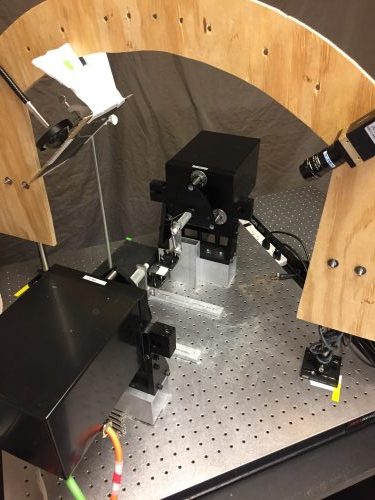
Reflectance vs. Transmission QPLI
Current Application
Biologically-mediated Tendon Damage
In Review
1. King NO, Bhimani R, Castile RM, Garcia M, Gruev V, Lake SP: A non-invasive reflectance-based polarization method for tracking dynamic changes to collagen organization in mechanically loaded connective tissues, In review.
